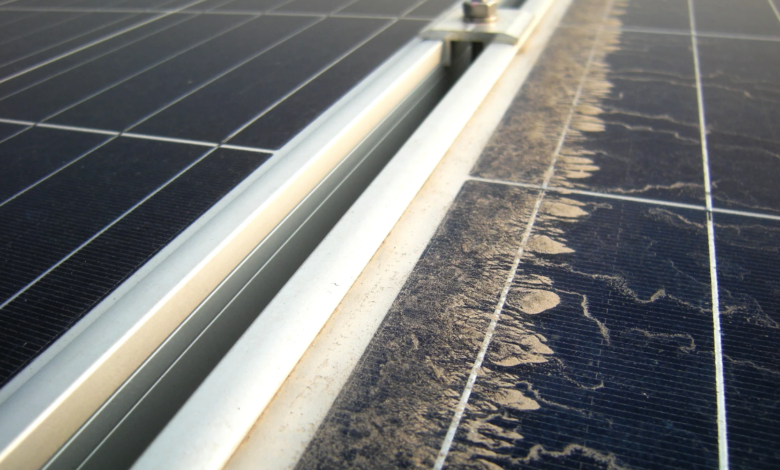A wind-powered electrodynamic screen for clean solar panels

A new application for triboelectric generators
(sustainabilityenvironment.com) – Keeping the solar panels clean means ensuring good efficiency and a long life of the plant. However, in some places the fight against dust and sand can be extremely complex, increasing maintenance costs. The most common method to remove dirt from photovoltaic modules employs, in fact, jets of water at high pressure, but is not feasible in areas with limited water and human resources such as deserts, mountains, and space. That’s why over the years the industry has churned out a wide list of anti-spig technologies. Innovative solutions such as electrodynamic screens (EDS). What is it? A transparent coating containing parallel electrodes generates electrodynamic forces to repel or move dust from the surface of the panels. Recent research has shown that an EDS can remove over 90% of the dust deposited on flat surfaces in minutes.
Everything is perfect on paper, except that the electrodynamic screen to operate requires high-voltage electricity of alternating current type. Picking it from the same panels is an uninteresting option from the practical side to which an external source is much preferred. Such as the new wind-driven triboelectric rotating nanogenerator (RTENG) created by the Department of Energy Science and Engineering of the South Korean research institute DGIST.
read also From Sweden the ecological and delicate recycling of solar cells in CIGS
How to keep solar panels clean thanks to wind
Triboelectric nanogenerators (TENG), a relatively new branch of environmental energy collection, stood out due to their high AC output voltage and ease of production. In practice, these devices can produce electricity from human movement, noise, water, or wind movements.
“We have conducted precise optimizations of RTENG structure, electrode design and EDS plate dielectric material to maximize system performance,” the team explains in an article published in the Nano Energy magazine. “Our results establish a direct relationship between the power delivered by the RTENG and the performance of the solar panel, achieving efficiencies of more than 90% at wind speeds of 28 m/s. This research highlights the practical feasibility of triboelectric nanogenerators as a sustainable energy source for dust management, offering deep implications for the field of solar energy”.





